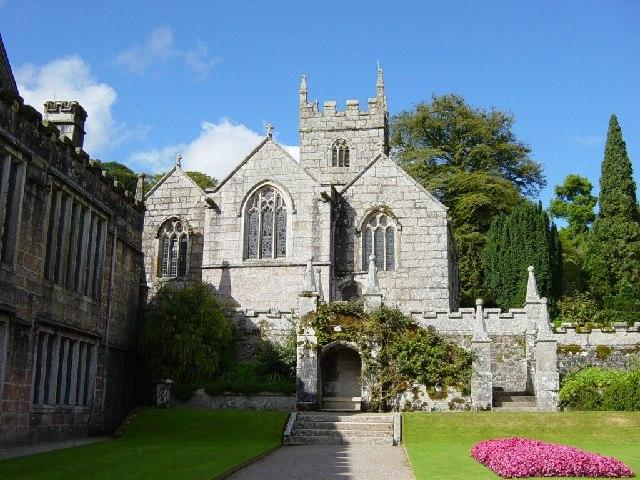St Petroc
Bodmin, Cornwall
St Petroc’s church is the largest and one of the oldest parish churches in Cornwall.

St Hydroc is situated adjacent to Lanhydrock House, the major National Trust property in Cornwall and it contains the monuments and burials of the Estate families.
Lanhydrock, Cornwall
It also has a fine alabaster reredos and a working peal of 8 bells. It dates from the 1400’s and is the local parish church, with services every Sunday. The church is kept open for Lanhydrock House visitors, but does not belong to the National Trust.
Lan indicates a church enclosure within earthworks. One of the Celtic saints who travelled as a missionary to Cornwall during the Dark Ages was Ydrocus-Confessor.
Lanhydrock church was dedicated to St Hydroc in 1478. The original church was 11th century and was rebuilt in its present form by the Augustinian Priory of St Petroc at Bodmin, to whom Lanhydrock belonged in the later 15th century.
The architectural style of the church is closely linked to St Petroc’s in Bodmin. The three stage granite tower, with a base predating the existing structure and the pillars and arches either side of the nave date to the 1450’s.
The entrance porch was built in 1546 and still contains original timberwork. The Robartes family bought the manor of Lanhydrock in 1620. They repaired the church and installed a large plaster panel showing the arms of James I, now one of the few surviving arms of his reign. The family occupied Lanhydrock until the 1960’s, and worshipped in St Hydroc. The family door linking the house to the church dates from the 17th century.
The church building was renovated from time to time and particularly in 1886-1888. The fine alabaster reredos, the font, and the peal of 8 bells in the tower date from this time. The tower also contains the 10th century Athelstan bell.
There are many Robartes memorials in the church, together with two slate tablets relating to George Carminow, who died in 1599. Early Carminow and Robartes burials are in a crypt beneath the church, now sealed and hidden. Later burials are in the surrounding graveyard. Most of the stained glass is from the 19th century.
The east window was paid for by Estate tenants. It depicts Christ’s birth, life, death and ascension, and is in memory of Tommy Agar Robartes who was killed in WWI. The original cross from his grave is also now preserved in the church.
Bodmin, Cornwall
St Petroc’s church is the largest and one of the oldest parish churches in Cornwall.
Gunwen, Cornwall
Gunwen Methodist Church was built 1869, it lies two miles north of Luxulyan adjacent to Breney Common Nature Reserve and looks towards Helman Tor and is lovely country for a picnic.
Lostwithiel, Cornwall
A 12th Century church situated in the very centre of the Lostwithiel, one of Cornwall's ancient statuary towns.